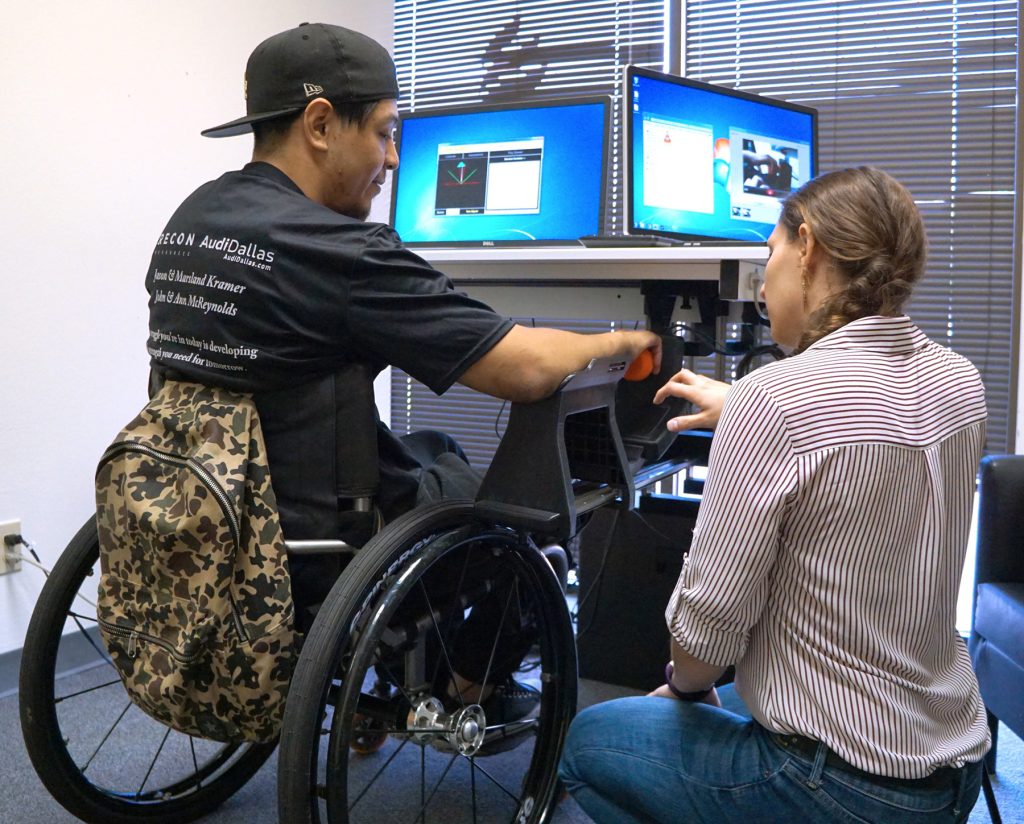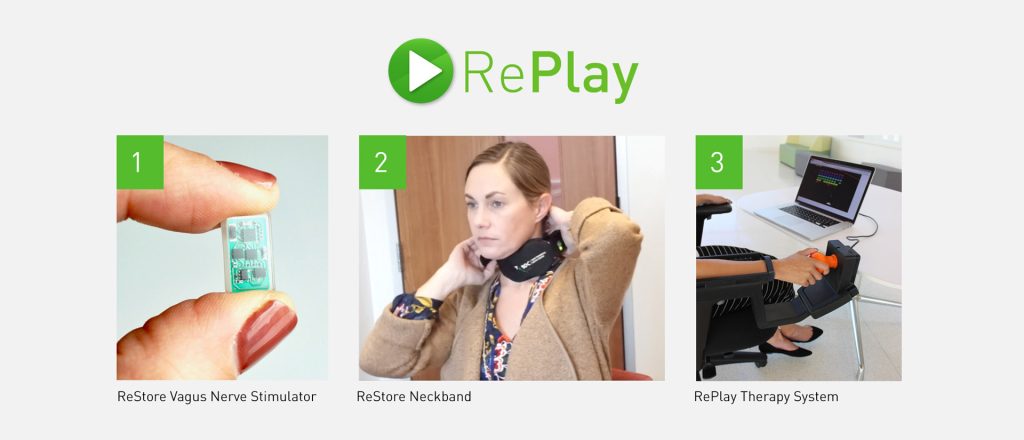W.W. Caruth, Jr. Fund at Communities Foundation of Texas Supports a Solution for Spinal Cord Injury
March 18, 2020
In 2016, the W.W. Caruth Jr. Fund at Communities Foundation of Texas awarded the Texas Biomedical Device Center (TxBDC) at The University of Texas at Dallas a gift to develop and test biomedical technology aimed towards helping patients with spinal cord injury. With this support, Dr. Robert Rennaker, professor in the School of Behavior and Brain Science at UTD and founder of the TxBDC developed technology resulting in a new treatment for patients who have suffered a spinal cord injury called RePlay.
The RePlay system consists of multiple devices that allows the patient to do rehab therapy in the clinic or at home. These devices measure the force and range of motion during important hand movements. Based on these measurements the system triggers a device called the ReStore Vagus Nerve Stimulator to strengthen the neural connections that are essential to recovery of hand movements.

How does it work?
The RePlay system has three main components.
- An implanted stimulator called ReStore is placed in a small cuff and attached to the vagus nerve in your neck. The ReStore device was developed to be safe and easy for patients to use.
- A neckband is worn during therapy to provide power and to communicate with the implanted stimulator using a smartphone application.
- Controllers are used to play video games. These controllers isolate specific hand movements important for rehabilitation. The controllers can also send a signal to the neckband to activate the ReStore stimulator at very specific times.

The RePlay system can be used to enhance hand and arm function that was lost due to a neurological injury or disease. For example, a patient re-learning to use their hand would be stimulated when they successfully pick up an object. Delivering stimulation to the vagus nerve during therapy directs neuroplasticity in the brain, enhancing recovery. Over time the patient’s ability to use their hand improves. By enhancing plasticity, patients recover to a greater quality of life than they would have otherwise.
On February, 20th the TxBDC received FDA approval to proceed with an early feasibility study using the ReStore stimulator to enhance recovery following a spinal cord injury. Clinical trials are expected to begin in the Summer of 2020 and will be conducted in Dallas, TX with our clinical partners at Baylor Scott & White and UT Southwestern Medical Center.
“The support of the Communities Foundation of Texas has been crucial to the development of this technology. We will now be able to hopefully enhance the quality of life for the thousands of people recovering from a spinal cord injury” said Dr. Robert Rennaker.
Read more about the Texas Biomedical Device Center.
